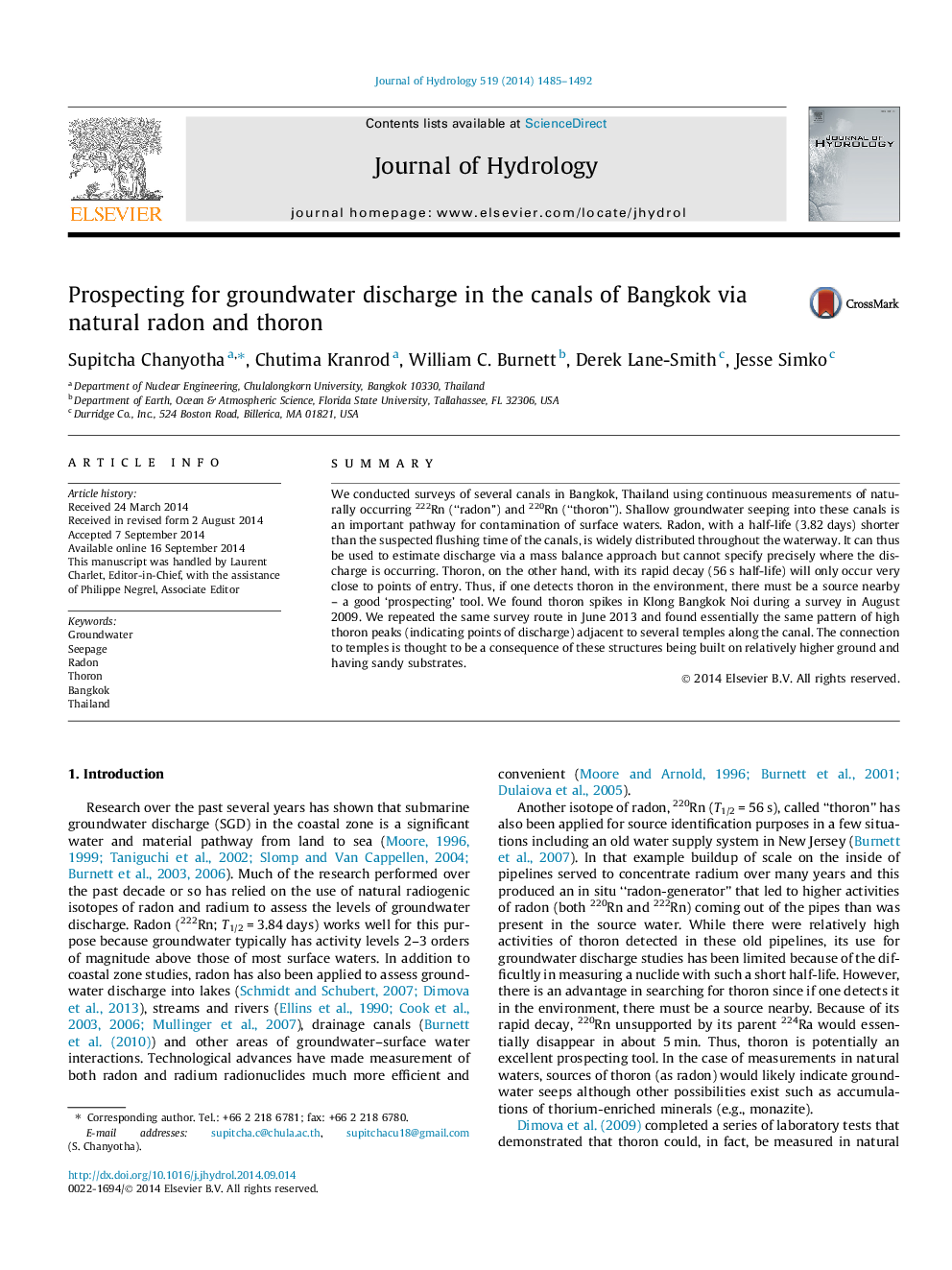| Article ID | Journal | Published Year | Pages | File Type |
|---|---|---|---|---|
| 6411936 | Journal of Hydrology | 2014 | 8 Pages |
â¢Surveyed Bangkok canal for radon (222Rn) and thoron (220Rn) four years apart.â¢Similar thoron patterns indicate sites of groundwater discharge.â¢Excess radon due to groundwater inputs.â¢Estimated 2000 to 3000 m3/day groundwater inputs into the canal based on a mass balance approach.â¢Together, the two isotopes of radon provide complementary information.
SummaryWe conducted surveys of several canals in Bangkok, Thailand using continuous measurements of naturally occurring 222Rn (“radon”) and 220Rn (“thoron”). Shallow groundwater seeping into these canals is an important pathway for contamination of surface waters. Radon, with a half-life (3.82Â days) shorter than the suspected flushing time of the canals, is widely distributed throughout the waterway. It can thus be used to estimate discharge via a mass balance approach but cannot specify precisely where the discharge is occurring. Thoron, on the other hand, with its rapid decay (56Â s half-life) will only occur very close to points of entry. Thus, if one detects thoron in the environment, there must be a source nearby - a good 'prospecting' tool. We found thoron spikes in Klong Bangkok Noi during a survey in August 2009. We repeated the same survey route in June 2013 and found essentially the same pattern of high thoron peaks (indicating points of discharge) adjacent to several temples along the canal. The connection to temples is thought to be a consequence of these structures being built on relatively higher ground and having sandy substrates.
